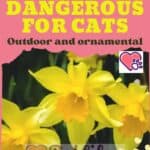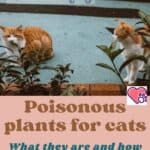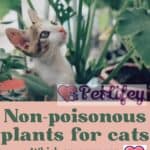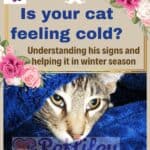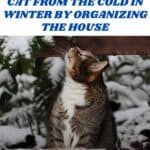Eating plants gives us fiber, but this benefit is not exclusive to people. The dogs enjoy eating some vegetables, and incorporate them into your diet involves adding vitamins to your body and facilitate your intestinal transit. And even cats, strict carnivores, derive advantages from plants; with the vegetables they eliminate the hairballs that accumulate in their stomach and their dangerous consequences. Even so, we must be careful, since there are some typical plants of the winter season and Christmas that are very dangerous, sometimes even deadly. These are six of them.
Poinsettias, holly, and Christmas fir are dangerous and even toxic for cats and dogs, as ingesting them can lead to indigestion or gastroenteritis and even serious health problems.
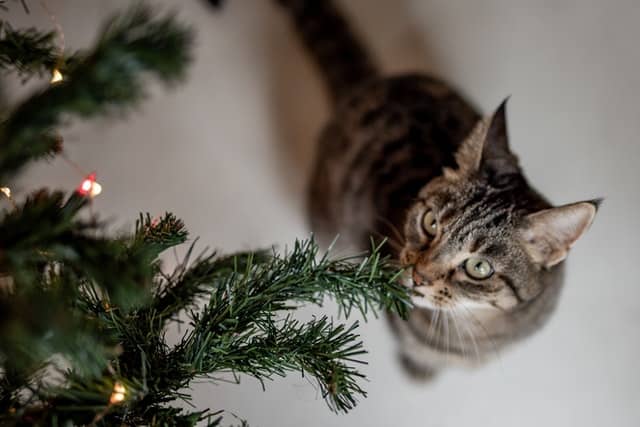
Dogs and cats eat plants for reasons other than food. Sometimes they do it out of stress, even out of sheer boredom. This extreme is especially true in the case of dogs that spend too much time alone at home or cats that do not have access to the outside, and whose domestic environment is not sufficiently kitted or adapted to their feline needs.
The problem with this is that there are very frequent decorative plants in our houses during the winter that are dangerous for these animals. And while, in some cases, ingesting them can cause the four-legged friend to indigestion or gastroenteritis (vomiting and diarrhea) more or less severe, on other occasions the toxicity of some plants can lead to serious health problems. Therefore, those who are thinking of putting several plants in their home this winter need to know which ones are safe for their pet and which, on the contrary, they should avoid completely.
The poinsettia is toxic to the pet
The poinsettia plant, or poinsettia, has colorful leaves, usually red in color, that irritate the tissues of the mouth and even the esophagus. If the dog or cat accidentally ingests these leaves, it can cause nausea and vomiting of relative severity.
But, in addition, since they are plants commercialized on a large scale during the Christmas season, many of the specimens contain pesticides and fertilizers that are dangerous for them, especially for smaller animals, whether they are kittens or dogs. But puppies are also very vulnerable. And the most severe reactions can cause seizures and even death.
Holly and mistletoe: intestinal pain for cats and dogs
Both holly and mistletoe are characteristic Christmas plants and with some risk for pets. But the toxicity of these vegetables for the dog or cat is not reduced to their leaves, since their fruits are also dangerous and their ingestion can cause severe gastrointestinal pain, with symptoms that include diarrhea and severe vomiting .
In the case of mistletoe, two substances are responsible for this toxicity. Specifically, two proteins called toxoalbumin and phoratoxin, which not only cause damage to the stomach and intestines, but can also cause a severe drop in blood pressure, respiratory problems and, in the case of severe poisoning, the death of the friend. four-legged. The advice: keep them away from the pet this Christmas.
Lilies and daffodils – beautiful, but very dangerous for the pet
The lilies are common in homes during Christmas, and are also a key part of many branches. But these plants are as beautiful as they are dangerous for the pet. Its pollen is toxic, especially for the pussycat: just by brushing it and licking it later, it can end up in the hospital.
Also daffodils, known as the last flower of winter, are very dangerous for cats and dogs, especially their bulbs.
Christmas fir: its leaves are pointed and cause wounds
This tree is characterized by its sharp, needle-shaped leaves, also known as needles. The problem is that the needles irritate the stomach of the pet, if ingested, and can also cause gastrointestinal obstruction, as well as injuries.
And it is not the only danger of the fir tree. The oils it secretes irritate the mouth and stomach of dogs and cats, while, if ingested, the pesticides and fungicides (against fungi) contained in many of these trees can cause serious poisoning.
This precaution extends to the water in the pots. You have to be careful and avoid their access with barriers, fences or wooden decks.

